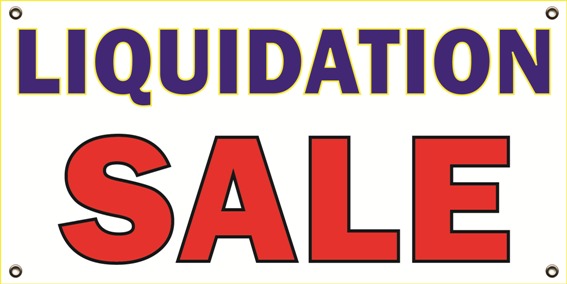A business small and large can have a challenging time at some point in their business life-cycle, selling products through traditional retail stores and through ecommerce websites. Many markets can be very competitive and regardless of product and industry, a brand time to time may be looking to replenish with liquidation of current inventory levels. When inventory levels must move, manufacturers and marketers look to liquidation methods.
Liquidating inventory levels allows companies to harness back money, to recover, re-invest, and get new inventory. A business has several options when it liquidates its inventory. A quick method is to drastically decrease prices with existing distribution channels, to promote the sale and get customers to buy. This takes time and may not be the ideal options. To receive payment faster and create momentum, brands choose another method.
The other method is to use a liquidator, who will pay a lower price for the products but will take possession of them and pay immediately. Retailers first step is to prepare their assets for sale towards liquidation. Companies can split items across multiple liquidators for maximum results.
Getting Ready for Product Liquidation
When a business is getting ready to liquidate product inventory, it follows several steps. These steps start with discarding any inventory that is expired, damaged, etc. The next step is gathering paper work such as warranties, records, and so on to be available as needed. A written inventory of liquidating items is created with images, descriptions, and asking prices. Once a business has done their due diligence, they are ready for selling their product inventory through liquidation services.
Product Liquidation Service Providers
– Genco genco.com
– Only Excess onlyexcess.com
– Liquidation liquidation.com
– Sirplus sirplus.com
– BStock Supply bstocksupply.com
Benefit of Liquidating Inventory Levels
Having inventory is important in the retail sector to keep customers and vendors happy, but having too much inventory can be financially harmful to a business. This is when the retail sector looks to liquidators to free up space and keep cash flow positive. At times, it makes sense to liquidate inventory levels. This generates immediate cash for a business. Especially, for products that have not sold well for a retailer. Also, if a business has perishable items such as the beauty industry and skin care, moving products prior to expiration dates is critical for profitability of a company.
Once a business has recouped cash, it can reinvest it into new inventory, products, marketing and sales efforts. Staying flexible and being able to act quickly a major advantages in today’s fast paced business environments.
Liquidation Market
The market for liquidation products is huge – $127 billion in the United States alone.
A closer look shows that B2C sellers (mostly retailers, online, auctions and flea markets) source their product from liquidators. Within liquidators, there are resellers that buy from large liquidators and repair and refurbish or sort for higher value, and then resell the products to B2C sellers.
Yet, the market is still maturing. Traditional methods of disposing assets, such as liquidation sales and auctions, remain popular.
For companies that do not know exactly how to go about liquidating their assets and selling inventories, consulting services can help organizations through advise, guidance, and execution.







